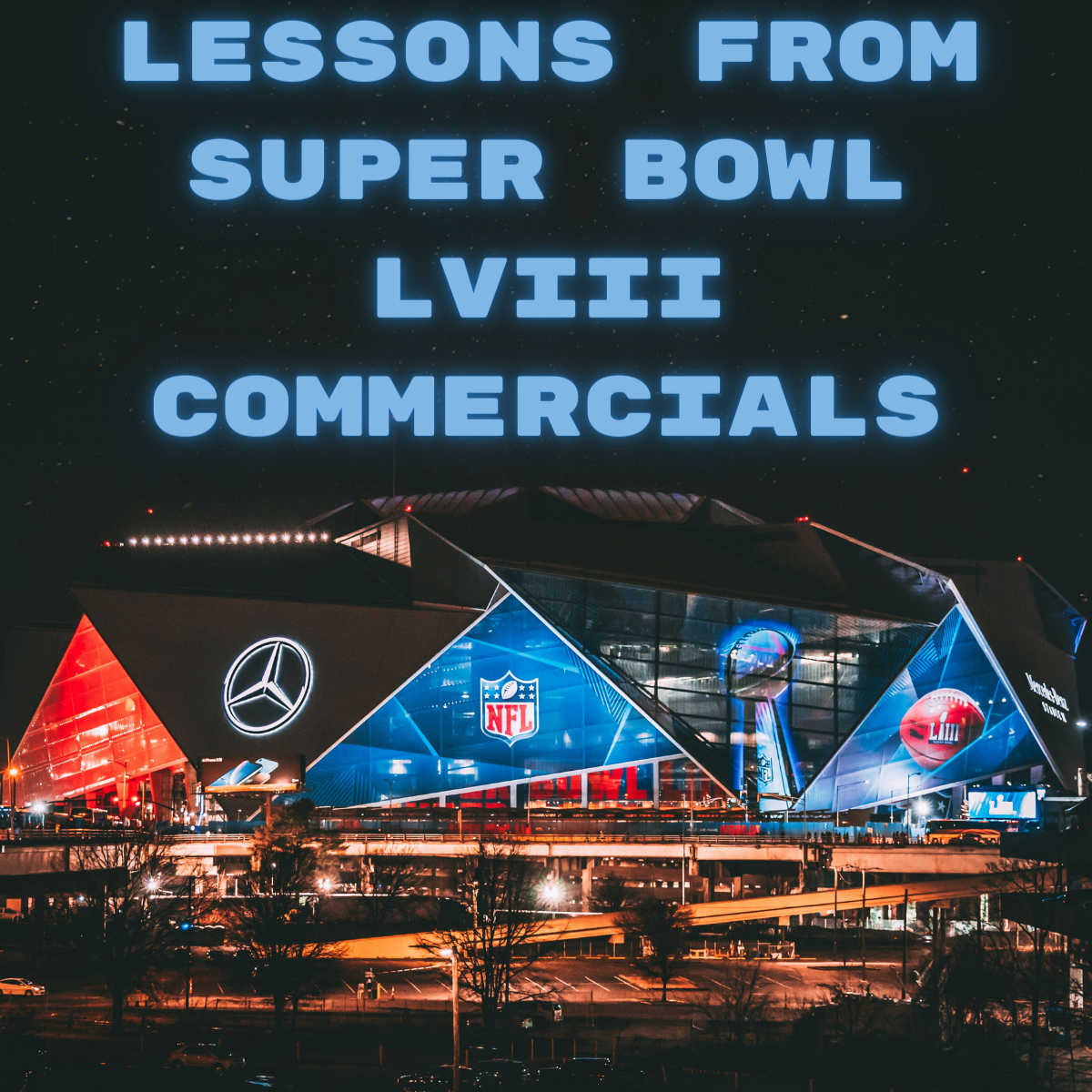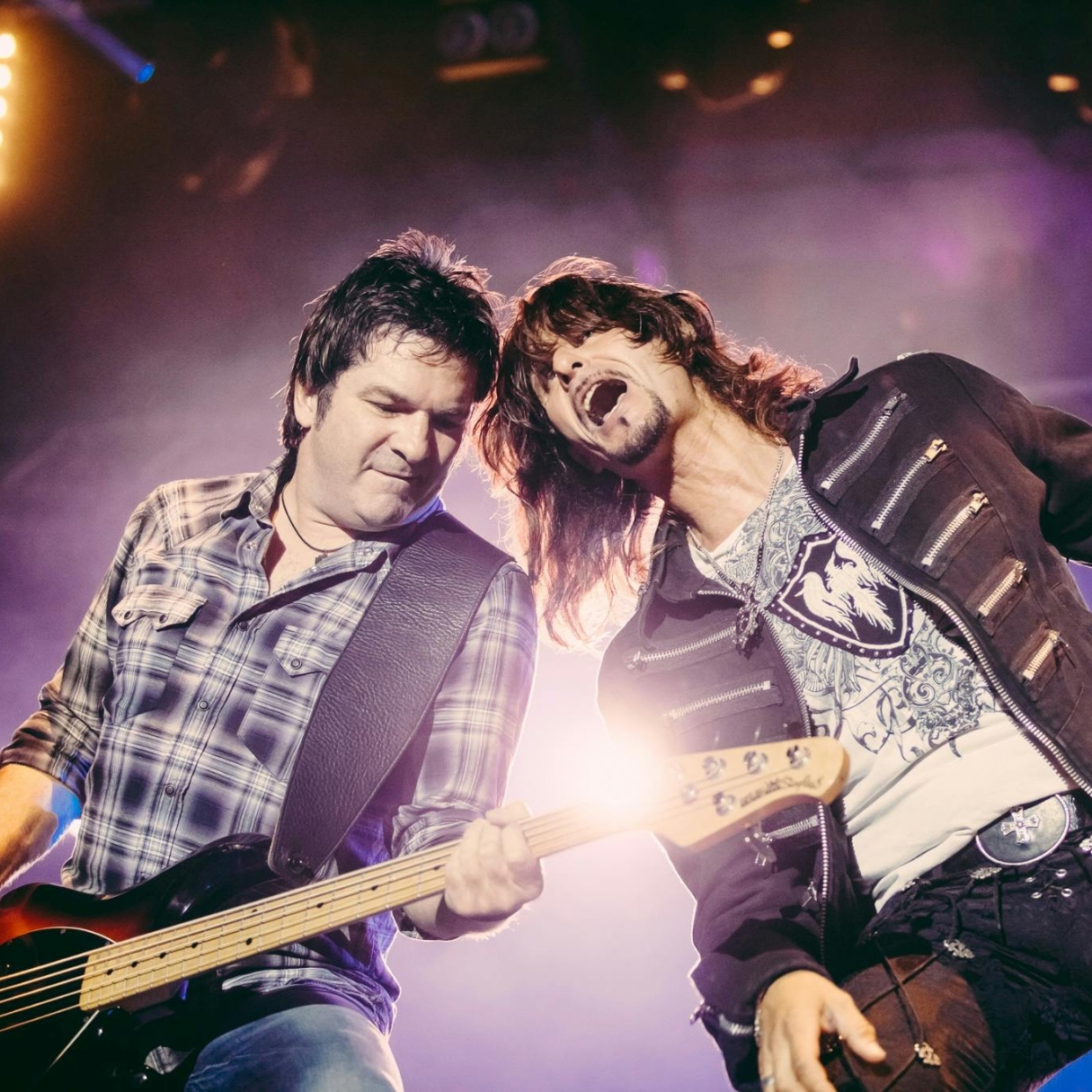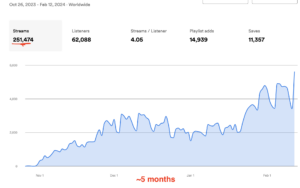I was struck by a trend in this year’s Super Bowl commercials:
A ton of them featured celebrities.
If you watched the game (hello, 37% of my fellow Americans), I bet you noticed this, too. It felt like you couldn’t go a couple of seconds without seeing some famous person – and no, I’m not just talking about our benevolent overlord Taylor Swift, may she live forever, who apparently graced our screens for only 54 seconds.
T-Swift aside, there was Arnold Schwarzenegger repping State Farm and struggling hard to pronounce “neighbor.” There was Tom Brady acting as a lame, strangely sympathetic DJ in a spot for Dunkin Donuts. And there was Post Malone wishing for a T-Rex from the Bud Light genie, which is a sentence that proves million-dollar commercials are made by weed-fueled college kids.
The broadcast was basically famous person after famous person for four hours straight. You couldn’t throw a rock at your TV without hitting a celebrity.
Anyway, after the game, I spent some time reading analyses of the commercials so I could quote marketing numbers and sound smart. As it turns out, more than 50% of the commercials during the big game featured a big name. And according to an official-sounding advertising executive quoted in a piece by Forbes, here’s why:
“Because of the significant investment that goes into a single spot, there is a lot of pressure for the commercial to break through. Celebrities offer the ability for viewers to instantly recognize and connect with the commercial, which is imperative when they only have 60 or 30 seconds to grab viewers attention.”
It makes sense, right?
To guarantee that the millions of dollars they spent on ad costs were worth it, companies leaned hard into the most fundamental principle of popularity:
They tied their products to familiar faces.
“Great,” you’re thinking. “But I don’t have access to Arnold Schwarzenegger or the Bud Light genie, so what does this have to do with me?”
Fair question.
Well, here’s this week’s interesting music marketing hack: A bunch of indie artists (and now record labels) are doing the same sort of thing.
They’re tying their music to instantly recognizable celebrities.
They’re capitalizing on the extraordinary power of familiarity to catch attention, but they’re not spending millions of dollars or making Super Bowl commercials.
Nah.
They’re just making TikTok edits.
So what are TikTok edits?
Basically, they’re short-form videos that comp together highly recognizable videos and music to communicate a message or tell some sort of story.
If that sounds complicated – it’s not. You’ll get the idea if you just watch one:
- Here’s an edit of the saddest Marvel deaths.
- Here’s an edit of Spiderman.
- Here’s an edit of a scene from Star Wars.
- Here’s an edit of Tyrion from Game of Thrones.
There are edits for virtually anything with a fanbase: athletes, actors, TV shows, movies, etc. It’s slightly creepy, but it also makes total sense. Ever since celebrity culture has been a thing, people have latched onto images of their idols – drawing pictures of superheroes, cutting out magazine photos of stars, whatever.
It follows that we’d do the same thing on social media platforms.
Now, from a music marketing perspective, the interesting thing is the key role that music plays in edits.
I’ve run normal influencer campaigns before, and I’ve always come away unimpressed. Basically, my outcome was that random Instagrammers would post videos with my song playing softly in the background. The music would be completely unrelated to the concept of the video and, as a result, would go completely unnoticed.
Edits are different. They don’t just use music – they focus on the music.
I mean, without a song in the background, the above videos wouldn’t work. They’d just be random collections of clips. But with a song playing behind them, they feel like something from a movie trailer or a hype video.
And, of course, the flip side is true, too: The visuals make the song into something more.
You remember how Kate Bush’s “Running Up That Hill” blew up from its sync spot in Stranger Things?
Edits work kind of like micro syncs. It’s pretty hard to get a song featured in Stranger Things, but it’s relatively easy to get some TikTok account to put your song behind your favorite TV show.
Sure, one feature in a TikTok account isn’t going to have the same effect as a certified sync on Netflix’s most popular show. But it’s also not all that hard to get 10, or 20, or even 100 placements in TikTok edits. You could conceivably do this yourself, but it takes less time and effort if you pay an agency.
And at a certain point, the numbers start to add up, to the point that major labels are starting to notice.
Last week, I talked to Dalton Piche, the founder of Members Media.
Dalton showed me a few examples of songs that his agency has blown up using TikTok edits – and when I say “blown up,” I mean that in the full sense of the phrase.
Honestly, the numbers are crazy.
We’re talking millions of Spotify streams per day, with engagement metrics that are through the roof (6-10 streams per listener, for example). Now, the songs Dalton showed me were from major-label artists whom most of you would know, so the tracks obviously had some initial traction upon release.
But the bump from TikTok was incredibly clear in the data.
So is this going to be the next big music marketing trend?
Dalton definitely thinks so. The concept clearly works, but there are a couple of caveats.
The main one, from my perspective, is that this tactic falls into what is at best a legally gray area.
If you run an edit campaign, you’re syncing your music to copyrighted visuals without the express consent of the creators.
I’m not a lawyer, so I don’t know exactly what the risks of this might be. According to random Quora commenters, there’s a (probably flimsy) argument that, because most edits aren’t selling anything, they fall into the “fair use” category.
I don’t know whether or not that would hold up in court. I do know that, for the most part, TV and film studios seem totally content to let these edits live online.
They’re pretty much functioning as free advertising for films and shows – so why would studios want to take them down?
The other caveat is that, according to Dalton, edits work best for promoting hard rap or hip-hop.
In most cases, that’s because the beat is really important in tying the visuals together. It’s a little harder to set a folk song underneath of a Star Wars edit, I guess.
But it’s not impossible. There are definitely creators making edits in other genres. I did a minimal amount of digging and found plenty of non-hip-hop edits, so they’re obviously out there.
I think, as with any sync placement, it’s simply a matter of finding the right musical fit for the story that’s being told.
And that brings me to today’s final question:
Should you use this for your music?
I’m not sure. Personally, I’m still turning the whole thing over in my mind; to be fully transparent, I’m not sure how I feel about it, mostly due to the copyright stuff. But, in the wake of reading Hit Makers, I’ve certainly found it interesting.
As the Super Bowl proves, familiarity is powerful. TikTok edits put that concept into practice.
Plus they’re about a million dollars cheaper than paying Arnold Schwarzenegger, Post Malone, or some weed-fueled college kids.
I guess we’ll see what happens.









